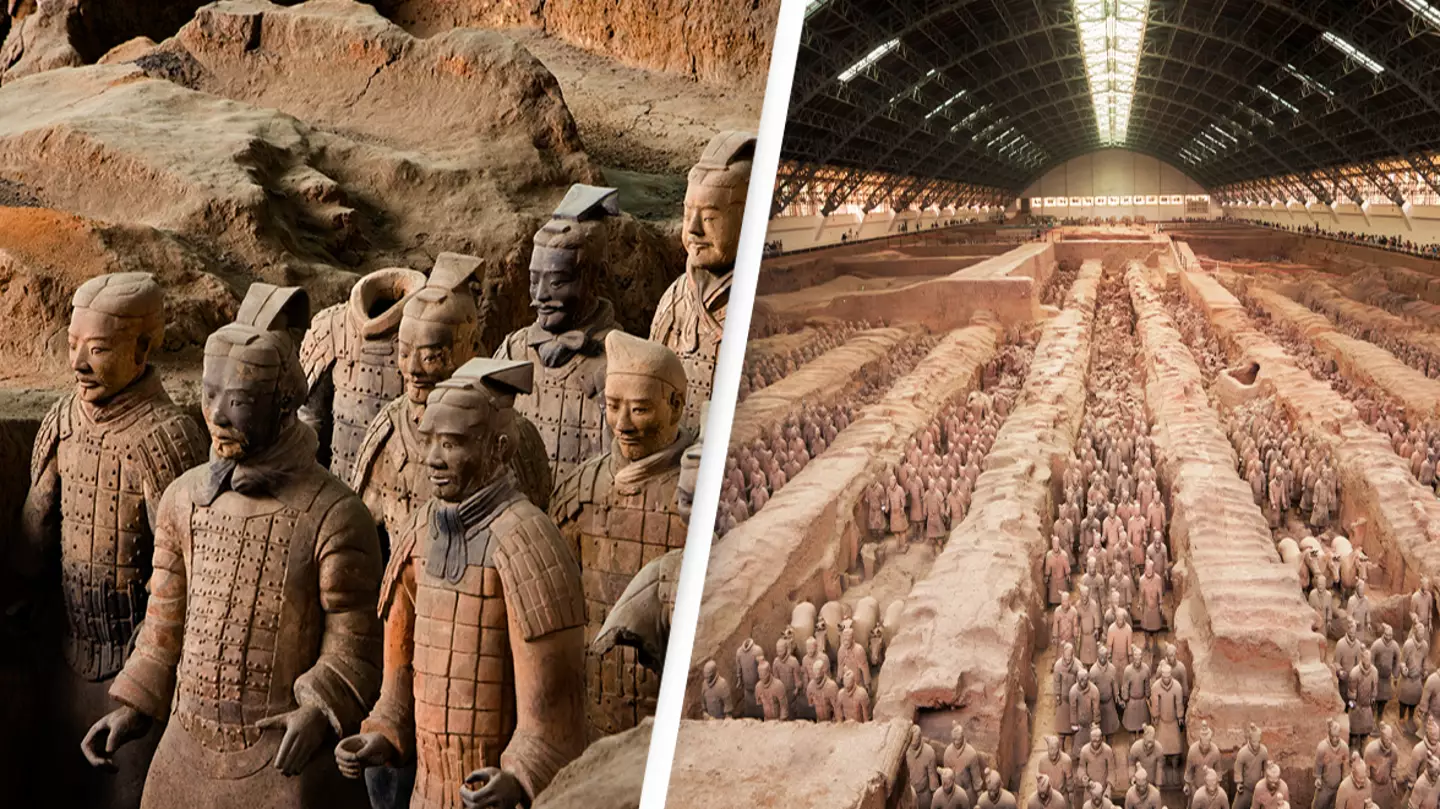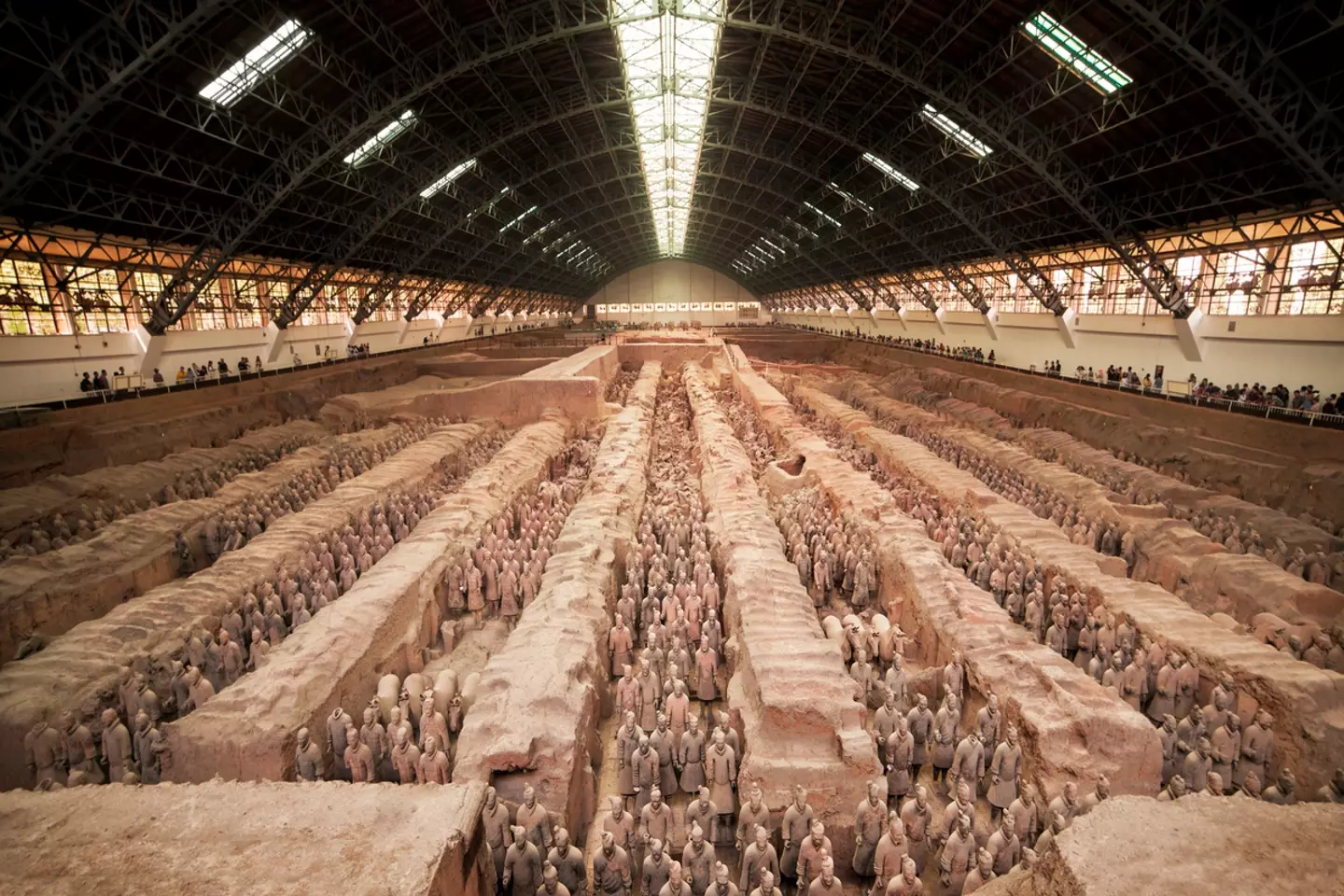It may sound like something out of Indiana Jones, but historians are concerned that the tomb of China’s first emperor is filled with booby traps.
Despite it being renowned the world over for its Terracotta Army, the final chamber and resting place of Qin Xi Huang has yet to be fully excavated.
The insane necropolis spans an estimated 60 square kilometres and with part of it remaining buried under a 51.3m high mound.
Despite this, the final resting place of China’s first emperor Qin Xi Huang, who reigned from 221 BC to 210 BC, lay undisturbed for centuries.
It was only in 1974, when a group of farmers unearthed the first terracotta fragments, that the site took on any historical significance.
Since then, archaeologists have painstakingly uncovered over 8,000 stone warriors and many other artefacts, but the chamber containing the emperor remains unopened.
According to an early Chinese historian, anyone setting foot in the tomb should fear for their life.
In The Shiji, historian Sima Qian claims that the final chamber is littered with booby traps, such as flowing rivers of mercury to ward off intruders.
The great Han Dynasty historian, who lived from 145-87 BC, says that there are also crossbows that will ‘operate automatically’ and shoot anyone who tries to excavate the site.
He also alleged that the workers involved in the construction never returned, to ensure no one would be able to bypass the ancient tech.
But is this really a historical fact?
While it might sound like a job for Indiana Jones, some modern historians have backed the claims.
In her paper about the legendary historian, the University of California’s Dr. Michael Nylan said that Sima Qian was eager to be accurate when documenting the past.
Nylan wrote: “[There was] the extreme care with which Sima Qian gathered and weighed available evidence in an attempt to convey an objective portrait of the Chinese past.”
Even more amazingly, archaeologists have actually found high levels of mercury at the historical site.
A group of scientists even recorded this fact in a research paper, entitled Mercury as a geophysical tracer gas, back in 2020.
They wrote: “Clearly, there are very large uncertainties in these estimations, but our findings add to the credibility of 2,200-year-old records by historian Sima on the existence of large amounts of mercury in the Emperor Qin tomb….”
Someone needs to get Harrison Ford on the case.

 Katherine Sidnell
Katherine Sidnell
